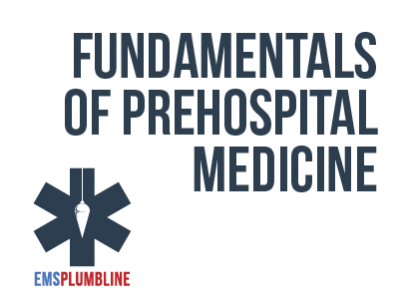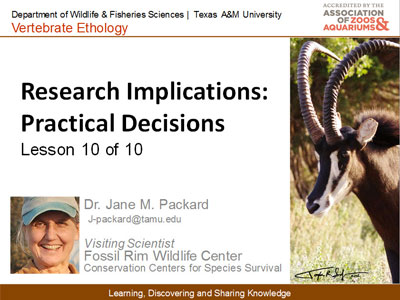 |
Integrating Plants and Animals at San Diego Zoo Safari Park |
1.00 |
The task of how to maintain a healthy plant collection in and around animal exhibits in zoos, for the benefit of the animals and guests, is a challenge. This webinar will show the techniques used for selection, installation and maintenance of trees and other plants, for bird, small and large mammal, primate and multi species exhibits. It will give real examples of plants that work, and those that don’t, and techniques you can implement to ensure the best possible integration for both the plants and animals. Although focused on the Southern California climate zones, many of the principles are applicable at zoos nationwide. |
 |
Building Upward: Resuscitation of Anaphylactic Shock Part 2—Scenario 1 |
1.00 |
The second part of this series is the first of three scenarios. All three scenarios are designed to review complicated situations that BLS providers may be asked to navigate. This scenario has us consider the care of an anaphylactic patient in the setting of a pregnancy. Paramedic student Vanessa Petote does an excellent job of interviewing Dr. Jeremy Cushman. Final Exam: Please read each question carefully. You will have two attempts to gain a 70% or higher on this exam. If you are not successful in two attempts, you are welcome to take the course again to gain the certification. |
 |
Research Implications for Practical Decisions |
1.00 |
The researchers on your team have presented you with the results of their behavioral inquiry. Now you are ready to decide what this means in terms of adaptive management to meet your goals for the animals under your care. Listen as practitioners and researchers return to the "3 C's" to discuss the practical implications of a behavioral study |
 |
Organizational Communication: Relational Context and Organizations (Instructor Guide) |
0.75 |
The relational context of a communication exchange includes the circumstances, within an organization, that necessitate this exchange between employees. A number of factors affect the relational context, including the status of the employees within the organization, their motivation, and their relationship with other employees. All communication within an organization depends on the intent of the participants.
In this course you will learn to: identify the relational context and the factors that influence it, and identify the different personality types, and develop individual-organizational relationships.
This Instructor's Edition of this course includes notes and suggestions to assist you in presenting the material, whether in an in-person classroom setting, or as an instructor-led online or distance-learning course. It also provides you with the answers to questions found in mid-lesson activities, as well as in the quiz that concludes the course. |
 |
Organizational Communication: Relational Context and Organizations |
0.75 |
The relational context of a communication exchange includes the circumstances, within an organization, that necessitate this exchange between employees. A number of factors affect the relational context, including the status of the employees within the organization, their motivation, and their relationship with other employees. All communication within an organization depends on the intent of the participants.
In this course you will learn to: identify the relational context and the factors that influence it, and identify the different personality types, and develop individual-organizational relationships. |
 |
Infection Control in Program Animals |
1.00 |
The purpose of this webinar is to offer a sensible approach for providing safe guest interactions with program animals at AZA zoos. The presentation will help you understand how to prevent zoonotic diseases and how to respond when they occur. You will learn the single most effective method of infection control. Participants will understand what is more important than making sure all animals are free of infectious diseases. It will help you to decide what species you can use for animal contact situations, what diseases to screen for, and how to respond to laboratory test results.
|
 |
Combating Sexual Harassment in the Workplace (NY) (Short) |
0.50 |
The purpose of this interactive training is to set forth a common understanding about what is and what is not acceptable in our workplace so that all employees can recognize sexual harassment and discrimination and understand their rights to a safe workplace. |
 |
Train-the-Trainer: Training Methods |
0.25 |
The purpose of this course is to provide the education and tools needed so that participants will be able to effectively deliver safety and health training to their workers. By the end of this course participants will be able to explain the different titles of a teacher, determine positive classroom control measures, examine diversity and stereotypes, describe training delivery methods, analyze questioning types and techniques, demonstrate the use of training aids, define how to empower the adult learner, and illustrate the proper use of assessments and critiques. |
 |
Train-the-Trainer: Training Methods (Corrections) |
0.25 |
The purpose of this course is to provide the education and tools needed so that participants will be able to effectively deliver safety and health training to their workers. By the end of this course participants will be able to explain the different titles of a teacher, determine positive classroom control measures, examine diversity and stereotypes, describe training delivery methods, analyze questioning types and techniques, demonstrate the use of training aids, define how to empower the adult learner, and illustrate the proper use of assessments and critiques. |
 |
Media and Social Media Best Practices |
0.25 |
The purpose of this course is to ensure you are aware of organizational best practices in regard to contact with Media, and use of Social Media. This policy is intended to support ALL employees and volunteers in making the best decisions for the organization. |











